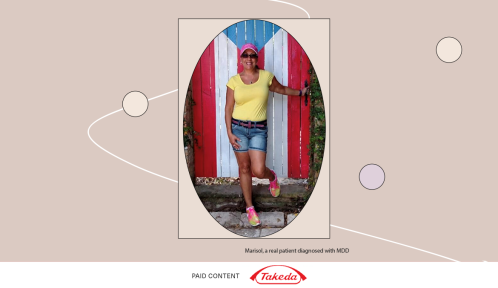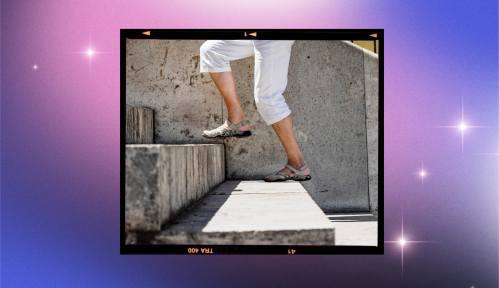Crying Is Contagious—Especially for People With Certain Personality Traits
Ever wonder whether crying is contagious? Here's what to know about emotional contagion, and which personality traits are more susceptible.

Ever been to a wedding, movie, or concert where one person’s emotional sniffles suddenly turns into an audience-wide symphony of waterworks? Well, I have—and it’s led me to wonder whether this phenomenon is mere coincidence or if crying may actually be contagious.
Experts in This Article
social psychologist based in Hawaii
professor of psychology at the University of Hawaii
The idea of “catching” feelings is something researchers have been looking into for years. Dubbed “emotional contagion,” it occurs when you’re interacting with someone who is feeling something strong that in turn causes you to take on that same emotion, says social psychologist Daniel Rempala, PhD.
Crying may be more contagious than other feels, simply because the act is so noticeable—whether they’re tears of sadness, joy, or fear, says Dr. Rempala. But still, all emotions are susceptible to transference.
Here’s why “catching the feels” is a real and true thing
The process of catching an emotion comes from a concept that social psychologists call mimicry. “In conversation, people automatically and continuously mimic and synchronize their movements with the facial expressions, voices, postures, movements, and instrumental behaviors of others,” says Elaine Hatfield, PhD, an emotional-contagion researcher. She essentially likens it to “monkey see, monkey do.”
You’re constantly reading cues from people around you and subconsciously mimicking their behavior, which in turn affects your emotional state.
Essentially, you’re constantly reading cues from people around you and subconsciously mimicking their behavior, which in turn affects your emotional state. In fact, research on contagious crying in infants actually theorizes the occurrence to be an early sign of empathy development. More recent hypotheses even note that mimicry can extend to heart rate and even pupil size.
How your personality type plays into emotional contagion
Sure not everyone gets weepy during sappy love scenes. In fact, plenty are completely unaffected when someone bursts into tears right in front of them. This is simply because some are more prone to emotional contagion than others. Females typically skew more susceptible to emotional contagion than males, says Dr. Hatfield, but gender aside, personality type plays a big role in vulnerability into emotions.
People with higher self-esteem, emotionality, and sensitivity to others are more likely to catch emotions, while self-assertive people and narcissists are less likely.
Research in the Journal of Nonverbal Behavior found that people with higher self-esteem, emotionality, and sensitivity to others are more likely to catch emotions, while self-assertive people and narcissists are less likely. “People are more responsive to emotional contagion when they are paying attention to the other person, they care about the person, or they are especially good at reading another person’s emotional display,” says Dr. Rempala.
But being particularly susceptible to emotional contagion may not be for the best. Sure, being able to share in others’ emotional experiences is beneficial for bonding and relationships, and if you find yourself frequently affected by other people’s emotions, it’s not necessarily a bad thing, but it’s certainly something to be aware of. In some cases, especially related to the workplace, you may want to be more guarded, says Dr. Rempala—especially in order to avoid burnout.
Therapists, nurses, doctors, or social workers might want to be particularly attentive to the affect others’ emotions can have on them. But even if you’re not in a caregiving profession, negative vibes at the office can bring you down too, whether it’s coming from a colleague who’s always complaining or a toxic boss who only focuses on the negatives.
How to to keep out the bad vibes
The good news is, you can actually employ strategies to be less affected by other people’s bad mojo. For instance, Dr. Rempala’s research-backed method of choice, dissociation, could help you curb your susceptibility to negative emotions. All you have to do is a step back from the interaction in question and remain detached.
Basically just nod, smile, and tune out your Debbie Downer of a coworker the next time they start to gripe. Because when you’re able to pretend the situation at hand is just a bad movie, not buying in and letting it affect your mood gets all the more easier.
Sign Up for Our Daily Newsletter
Get all the latest in wellness, trends, food, fitness, beauty, and more delivered right to your inbox.
Got it, you've been added to our email list.










